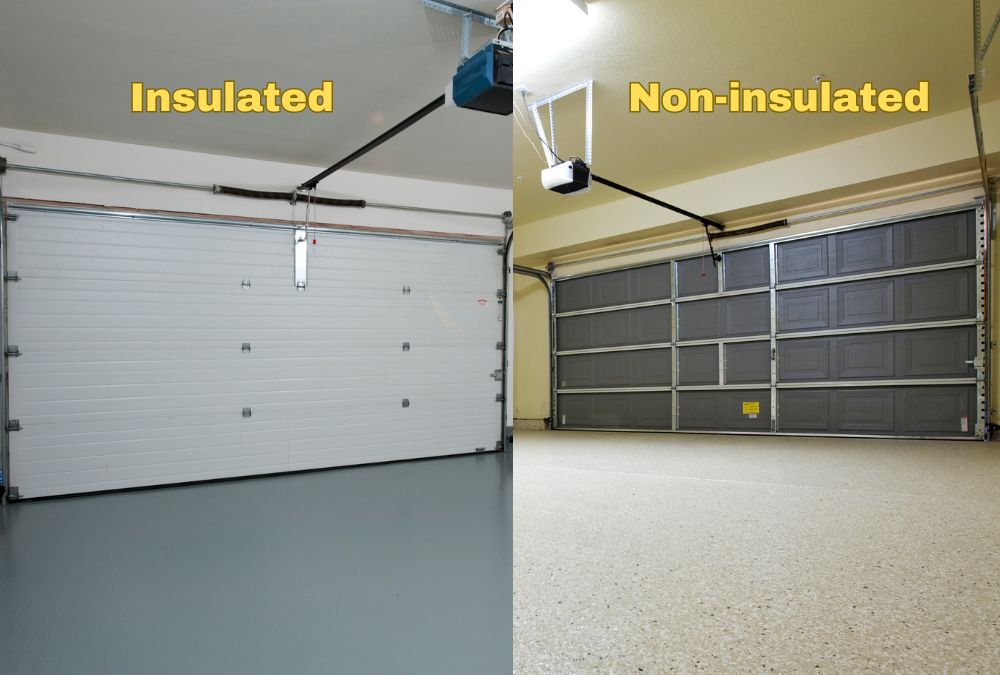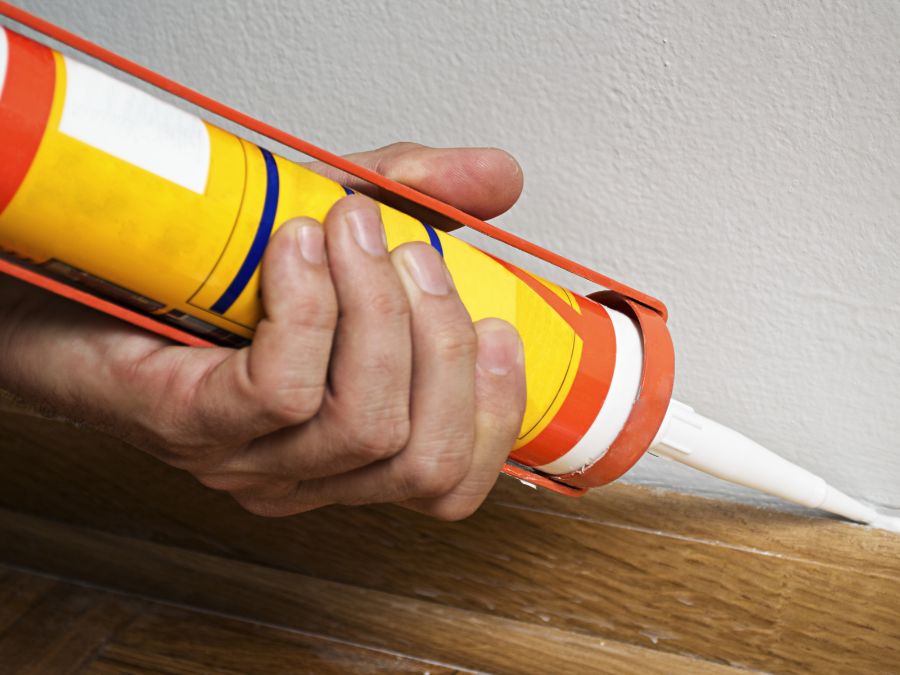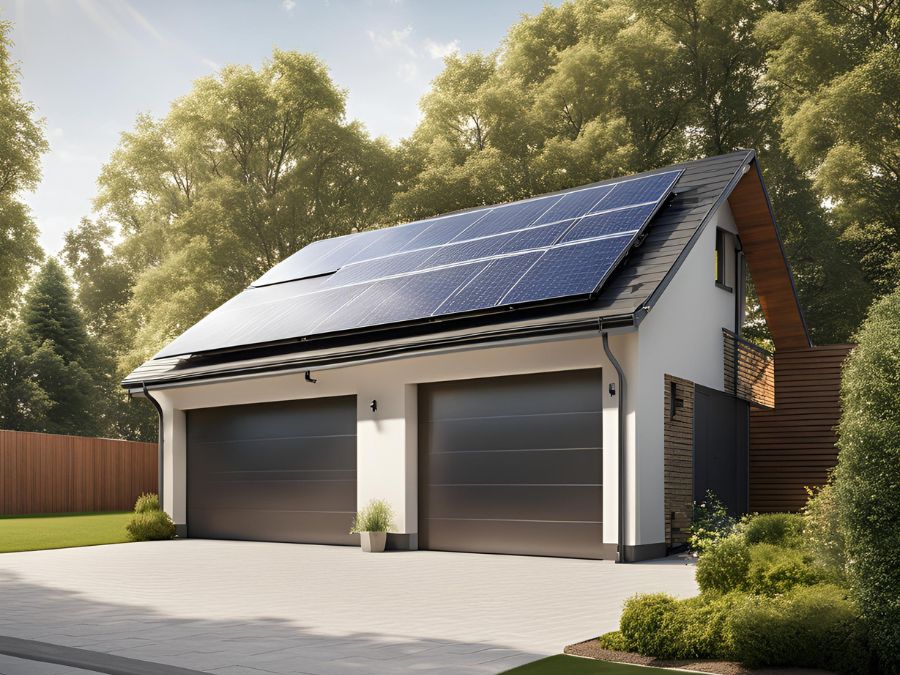15 Ways to Make Your Garage More Energy Efficient
When you think of making your home energy efficient, you probably focus on spaces like your living room, kitchen, or attic. But what about your garage? That often-overlooked space can be a sneaky energy hog if it’s not properly set up. A garage that’s leaking heat in the winter or sweltering in the summer is essentially draining your energy and your money, right out the door.
The good news? It doesn’t take a complete overhaul to make your garage more energy efficient. With a few simple changes and some mindful upgrades you can transform that cold, drafty space into a more comfortable and cost-effective part of your home.
Why You Should Embrace Energy Efficiency
Energy efficiency is all about using less energy to perform the same task. Energy efficient homes, for example, use less energy to heat, cool and run appliances and electronics. When essential home processes like running the heat, doing laundry, and turning on the lights use less energy, the benefits are huge.
- Environmental Benefits – Energy efficient homes decrease the stress on a community’s electric grids, which reduces its emissions. Traditional power plants burn fossil fuels which release greenhouse gases and contribute to air pollution. Energy efficient homes are also better equipped to switch to renewable energy.
- Health Benefits – Less emissions equals less air pollution which allows everyone to breathe better. The potential benefits of energy efficiency measures include improved physical health such as reduced symptoms of respiratory and cardiovascular conditions, rheumatism, arthritis, and allergies.
- Financial Benefits – Like most items these days, energy costs are soaring making it more expensive than ever to light your home, keep the temperatures comfortable, and do all the other things that demand electricity in the 21st century. So, the prospect of saving hundreds of dollars every year on your utility bill should make you take a hard look at an energy efficient home.
Making Your Garage More Energy Efficient
Now that you know some of the benefits of being energy efficient, it’s important to know how to take steps to make your home more energy efficient, starting with your garage.
Insulate The Garage Walls and Ceilings
Like most homeowners, you probably do not consider your garage to be part of your living quarters. However, unless your garage is physically separate from your house, the garage is encased in the same outer walls as your house and occupies the same “envelope.” Consequently, the garage is liable to be a drain on the temperature of your living quarters unless the garage interior is insulated to the same degree as your main living areas.
One of the most impactful ways to improve garage energy efficiency is to add insulation to your garage’s walls and ceilings. There are several types available, depending on your garage’s specific needs (such as blow-in batting, spray foam, and Styrofoam board insulation).

Choosing the right type of insulation and having it properly installed will keep your garage at a more stable temperature by limiting the transfer of cold and warm air from the outside.
A more stable temperature in your garage environment will mean that outdoor temperatures will have less of an impact on the temperature of the rest of the house. This, in turn, can reduce your heating and air-conditioning costs.
For homes with a living space above the garage, insulating your garage walls and ceiling becomes even more important.
Insulate the Garage Door
Your garage door itself could be the biggest culprit for your high energy bills. If you’ve got a builder-quality door, it’s likely that it’s one of the least energy efficient doors on the market.
Most garage doors are made of aluminum, a metal best known for its temperature transference abilities. This means that your door will work to slowly make your toasty garage as cold as it is outside in the winter, and your perfectly cool space sweltering in the summer. That’s exactly what you don’t want.

So, an extension of insulating your garage’s walls and ceiling is to make sure your garage door is outfitted with energy efficient insulation.
Improving your doorframe’s weather stripping will also help improve garage energy efficiency. Some skilled homeowners may be able to handle garage door insulation or weatherstripping insulation by themselves, or perhaps you’re due for a garage door upgrade to one that’s installed by professionals.
If you’re in the latter category, there are a number of custom options available to choose from, depending on the R-value (insulation’s heat resistance is measured by its R-value) you’re looking for.
Typically, a new garage door comes with either polystyrene boards or polyurethane spray foam as insulation materials. Modern garage doors are also designed with better thermal breaks and seals than older garage doors, which enhances their insulating capabilities.

Garage door insulation not only improves your garage door efficiency, it also:
- Makes garage doors quieter when in operation
- Reduces noise transfer from both inside and outside
- Strengthens the garage door
Pay Attention to the Garage-to-House Door
The door leading from your garage into your home can also be a source of energy loss. If it’s not well-insulated, or if the seal around it is worn down, you’re essentially letting outside air flow directly into your house, and inside air to flow out. Consider upgrading to an insulated, weatherproof door, and make sure it seals tightly when closed.
If the door is relatively new, try and assess just how tight a seal it’s currently providing. Replace or upgrade your door’s weatherstripping and the threshold barrier on the bottom of the door if necessary.
Seal Cracks and Gaps
Take a closer look around your garage. Are there cracks in the walls, gaps around windows or doors, or space where the floor meets the walls? These might seem minor, but they can add up to a lot of lost energy.
Use Caulk or Expanding Foam
Seal small cracks with caulk, which is flexible and durable, making it perfect for areas that experience movement or vibration. For larger gaps, expanding foam can do the trick. It expands to fill spaces and provides excellent insulation, especially around pipes or wiring that might be running through your garage walls.

Insulate Around Light Switches and Outlets
Inspect your garage’s light switches and electrical outlets to see if there are any small openings or gaps around them. If so, close up those gaps with some type of insulation material or sealant to limit the transfer of cold and warm outside air. It might seem inconsequential that these small openings can have an impact on your garage energy efficiency, but every preventative measure you can take will help, whether it’s to a large or small degree.
Fix or Upgrade Your Garage Floor
A damaged garage floor can also impact garage energy efficiency. Even small cracks in the floor can allow cold air and gasses into the garage and can be early warning signs of more serious structural issues. Road salt and water infiltrate into those cracks (from melted snow or ice) and can make the problem even worse. One option is to repair the cracks, but that might not be the best solution, as it is usually a short-term fix and will need to be addressed again.
A polyaspartic coating provides your best solution for long-term protection against garage floor damage and potential cracks. Plus, regular cleaning goes a long way in preventing future issues.
Upgrade to Energy-Efficient Windows
If your garage has windows, they can be another source of energy loss. Older windows with single panes are particularly inefficient. By upgrading to double panes or energy efficient windows, you’ll improve insulation and reduce drafts making, making your garage more comfortable year-round.

Don’t forget to check the seals around your windows as well. Just like with doors, a tight seal is crucial for keeping out cold air in the winter and hot air in the summer.
Consider Ventilation
Proper ventilation in your garage is crucial, especially if you spend a lot of time there. Without adequate airflow, your garage can become unbearably hot in the summer and trap unhealthy fumes from cars and chemicals.
- Install exhaust fans – These can help remove hot air and fumes, making your garage a safer and more comfortable place to work.
- Use natural ventilation: If possible, open windows or add vents that allow for cross ventilation. This can help regulate the temperature and improve air quality.

Update Your Lighting
When you’re looking to improve energy efficiency, don’t overlook the lighting in your garage. Many garages still use traditional incandescent bulbs which consume a lot of energy and don’t last as long as newer alternatives.
- Switch to LED bulbs – LED bulbs use significantly less energy and have a much longer lifespan than traditional incandescent bulbs. They also produce less heat, which can be a bonus in a space like a garage that tends to get hot. Plus, LED bulbs come in a variety of brightness levels, so you can find the perfect setting for your space.

- Add motion sensors – To cut down on wasted energy, consider installing motion sensors for your garage lights. This way, you won’t have to worry about forgetting to turn off the lights when you leave the garage. The lights will automatically shut off after a period of inactivity, saving energy without any extra effort on your part.
Unplug or Discard Older Appliances
Some garages serve as storage spaces for outdated or broken appliances that only compound your sense of disorganization. If you have any items of that sort, donate them to a thrift store or if they’re no longer functional, an appliance recycler.
Refrigerators are among the most common items stored in garages. You might use the extra fridge to double your fridge space or you might just keep the fridge around as a backup if your main fridge dies. In any case, don’t keep the fridge plugged in unless you keep it in use. A fridge consumes more energy than all other household appliances, so a dormant yet powered fridge is an excess drain on your power and your pocketbook.
Add Solar Panels for Heating
If heating your garage during the winter is a must, you might want to consider adding solar panels to the roof. Constantly heating your garage in the cold months can make your utility bills skyrocket, so adding solar panels and harnessing the power of the sun to power your heater is a great way to keep your costs down and be more energy efficient.

Reduce the Clutter in Your Garage
It could be surprising, but organizing things and reducing clutter in the garage can also have a positive impact on energy efficiency. An unorganized garage can attract unwelcome pests. These pests can destroy the insulation rods, chew the pipes and wires, and gradually gain access to your home. Clutter can also block vents and prevent air from circulating properly which can lead to increased energy consumption.

So, go through your garage and get rid of anything you don’t need or use anymore. Donate items that are in good condition (or have a garage sale) and dispose of those that are not. Once you are done uncluttering, you will be surprised at how much more comfortable and energy efficient your garage will be.
Get a New Garage Door Opener
An old garage door opener can be negatively impacting your garage energy efficiency. Today’s garage door openers are more energy efficient than the models of the past with many openers using 75% less power in standby mode.

Modern garage door openers are also quieter and come with high-tech features that allow you to control your garage door from anywhere with your smartphone.
Maintain a Smooth-Running Garage Door
As just mentioned, if your garage door opener is strained while operating the door then it means it is wasting energy. This not only goes for the opener, but the door itself. Proper garage door maintenance to make sure it is running smoothly helps save on energy costs as well as extend the life of your garage door and opener.
Adopt Energy-Smart Habits
Last but not least, practice energy conserving habits to enhance garage efficiency. Turn off lights when leaving the garage, keep both main and entry doors closed, and close windows, especially in winter. For non-air-conditioned garages, open windows in summer for ventilation. Encourage household members to adopt these habits, turning it into a game to enhance awareness and energy efficiency.
Make Your Garage Work Smarter
In the end, an energy efficient garage is about making smart choices and paying attention to the details. From proper insulation to upgrading lighting and sealing up those sneaky gaps, these changes can make a world of difference. Not only will you enjoy a more comfortable space, but you will also see benefits on your energy bill. So, what are you waiting for? Start making those energy efficient upgrades today!






